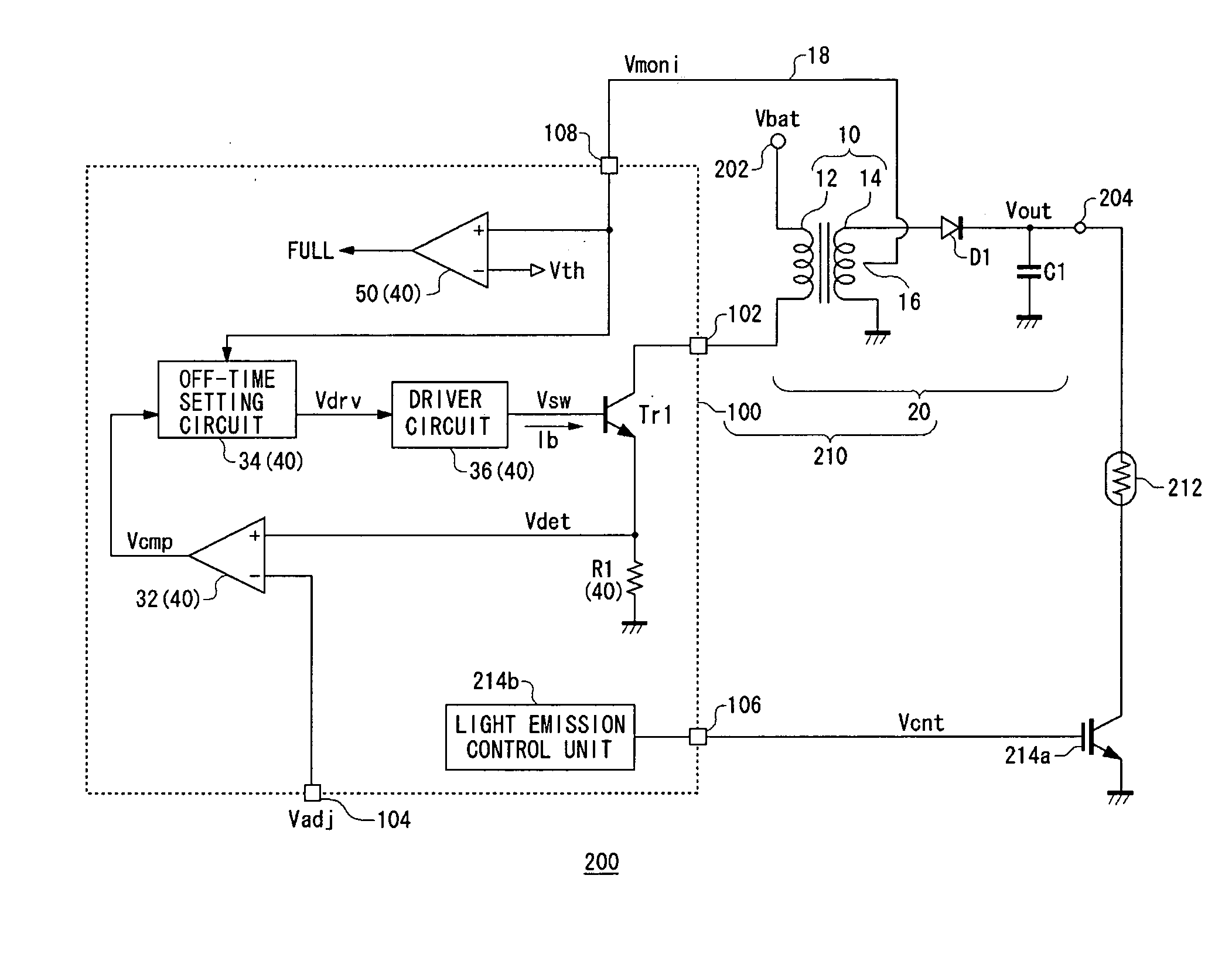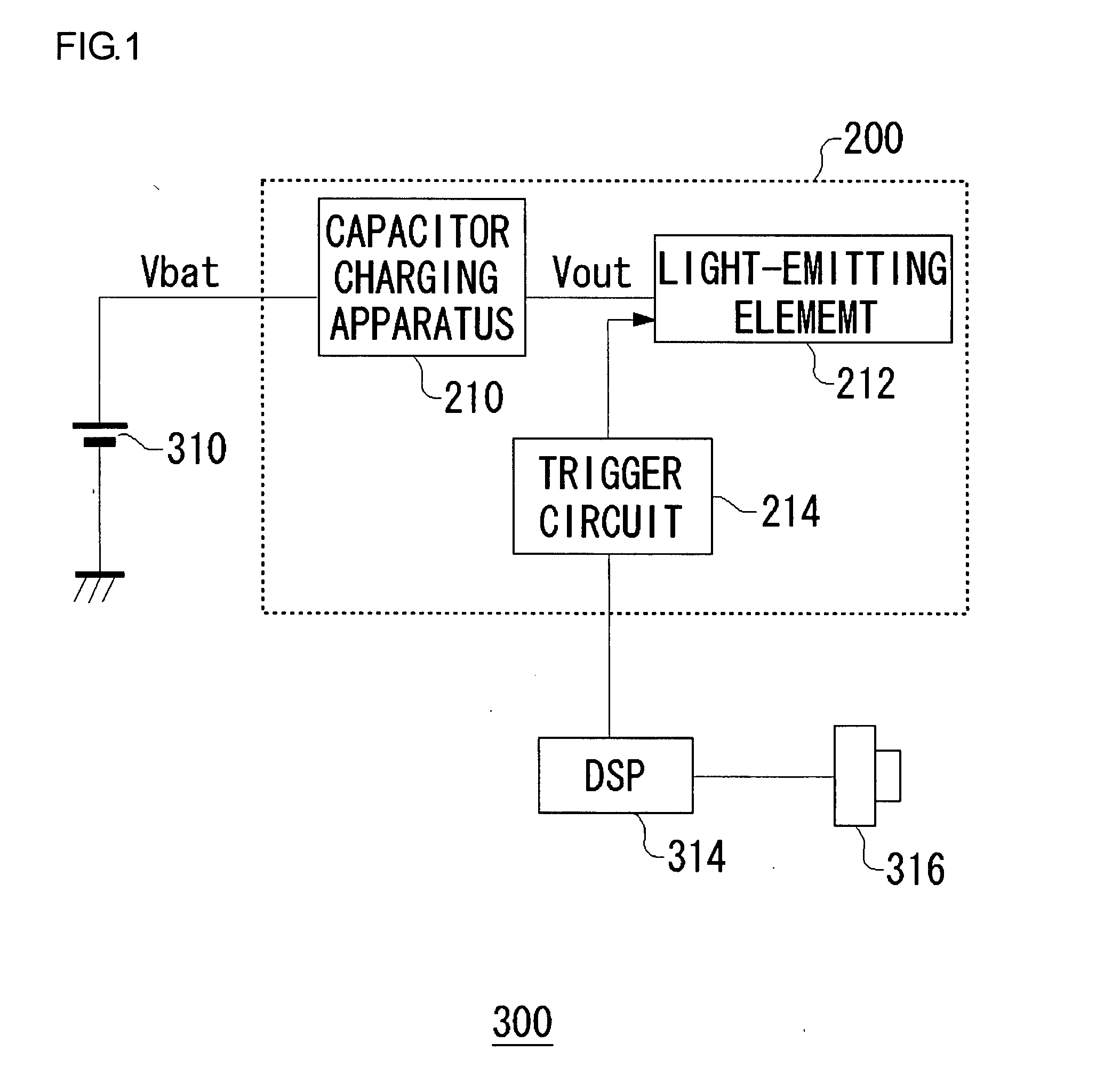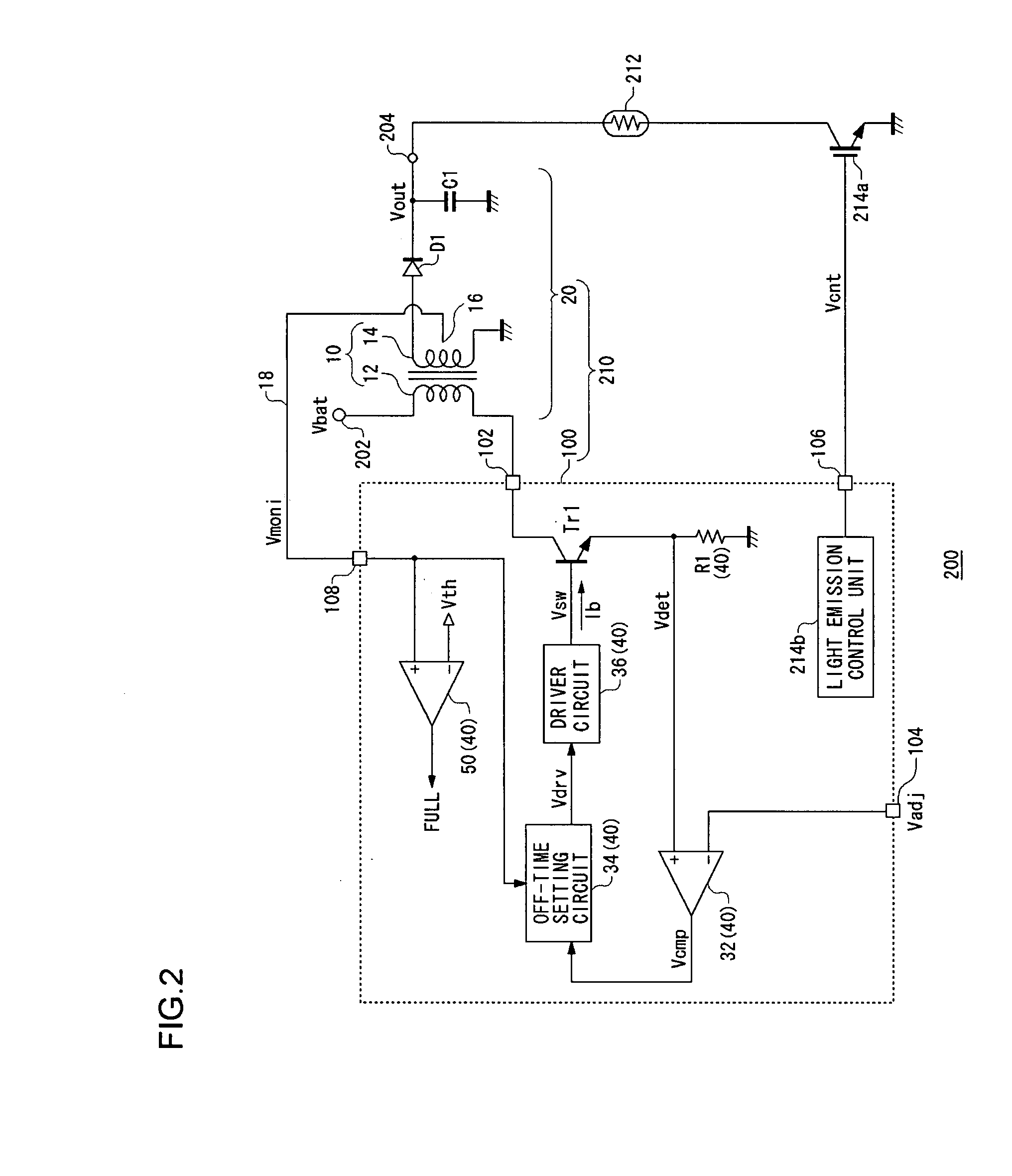Capacitor charging apparatus
- Summary
- Abstract
- Description
- Claims
- Application Information
AI Technical Summary
Benefits of technology
Problems solved by technology
Method used
Image
Examples
first embodiment
[0094]FIG. 1 is a block diagram showing a structure of an electronic apparatus 300 provided with a light emitting apparatus 200 according to a first embodiment of the present invention. The electronic apparatus 300, which is a digital still camera, a digital video camera or a mobile phone terminal provided with an image pickup function, includes a battery 310, a DSP (Digital Signal Processor) 314, an image pickup unit 316, and a light emitting apparatus 200.
[0095] The battery 310, which is, for instance, a lithium ion battery, outputs a voltage of about 3 to 4 V as a battery voltage Vbat. The DSP 314, which is a block for performing an overall control of the electronic apparatus 300, is connected to the image pickup unit 316 and the light emitting apparatus 200. The image pickup unit 316 is an image-taking device such as a CCD (Charge-Coupled Device) or a CMOS sensor. The light emitting apparatus 200 is a light source that is used as a flash at the time of image pickup by the image...
second embodiment
[0129]FIG. 4 is a circuit diagram showing a structure of a light emitting apparatus 200a according to a second embodiment of the present invention. Similar to the light emitting apparatus 200 according to the first embodiment, the light emitting apparatus 200a as shown in FIG. 4 is suitably used for the electronic apparatus as shown FIG. 1.
[0130] The electronic apparatus 300 of FIG. 1, which is a digital still camera, a digital video camera or a mobile phone terminal provided with an image pickup function, includes a battery 310, a DSP (Digital Signal Processor) 314, an image pickup unit 316, and a light emitting apparatus 200a.
[0131] The battery 310, which is, for instance, a lithium ion battery, outputs a voltage of about 3 to 4 V as a battery voltage Vbat. The DSP 314, which is a block for performing an overall control of the electronic apparatus 300, is connected to the image pickup unit 316 and the light emitting apparatus 200a. The image pickup unit 316 is an image-taking de...
third embodiment
[0163]FIG. 1 is a block diagram showing a structure of an electronic apparatus 300 outfitted with a light emitting apparatus 200c according to a third embodiment of the present invention. An electronic apparatus 300, which is a digital still camera, a digital video camera or a mobile phone terminal provided with an image pickup function, includes a battery 310, a DSP (Digital Signal Processor) 314, an image pickup unit 316, and a light emitting apparatus 200c.
[0164] The battery 310, which is, for instance, a lithium ion battery, outputs a voltage of about 3 to 4 V as a battery voltage Vbat. The DSP 314, which is a block for performing an overall control of the electronic apparatus 300, is connected to the image pickup unit 316 and the light emitting apparatus 200c. The image pickup unit 316 is an image-taking device such as a CCD (Charge-Coupled Device) or a CMOS sensor. The light emitting apparatus 200c is a light source that is used as a flash at the time of image pickup by the i...
PUM
 Login to View More
Login to View More Abstract
Description
Claims
Application Information
 Login to View More
Login to View More - R&D
- Intellectual Property
- Life Sciences
- Materials
- Tech Scout
- Unparalleled Data Quality
- Higher Quality Content
- 60% Fewer Hallucinations
Browse by: Latest US Patents, China's latest patents, Technical Efficacy Thesaurus, Application Domain, Technology Topic, Popular Technical Reports.
© 2025 PatSnap. All rights reserved.Legal|Privacy policy|Modern Slavery Act Transparency Statement|Sitemap|About US| Contact US: help@patsnap.com



